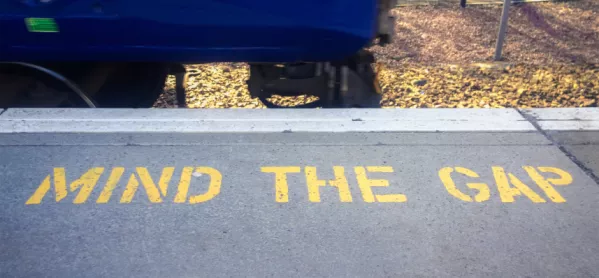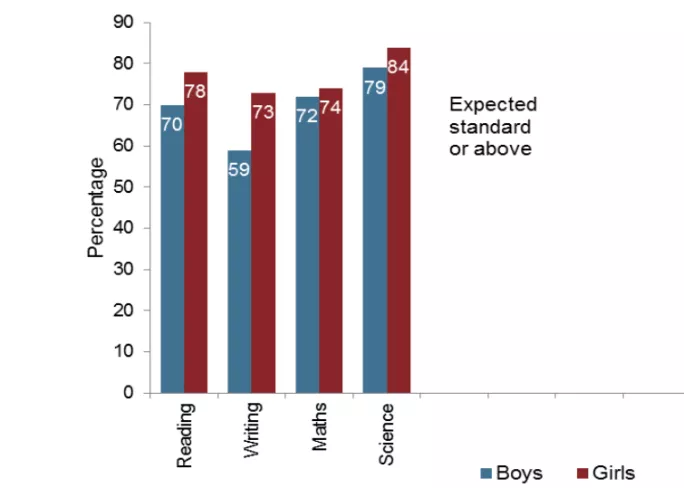The results of the new tougher assessments at key stage 1, published today, show that 65 per cent of six and seven-year-olds reached the expected standard in writing, 73 per cent did so in maths and 74 per cent did so in reading.
More than 640,000 pupils were assessed against a new curriculum and the standard expected is now higher than in previous years. Last year, 88 per cent of pupils reached the expected level 2 in writing, 93 per cent did so in maths and 90 per cent did so in reading.
The results of the phonics check, taken at the end of Year 1, were also published today. The test involves children reading aloud 40 words including 20 non-words. The standard of the test has remained unchanged from last year. This year 81 per cent of pupils reached the expected standard, up from 77 per cent in 2015.
Here are five things we learnt from today’s statistics:
1. Since 2010, the gap between pupils on free school meals and other pupils reaching the then expected standard (level 2) had been closing in all three subjects. In maths it had narrowed from 12 percentage points in 2010 to eight percentage points in 2015.
But at the new expected standard, there is now a gap of 18 percentage points in maths, just 58 per cent of pupils on free school meals have achieved the expected standard.
Similarly in writing, the gap was 13 percentage points in 2015 and is now 18 percentage points. In reading, the gap was 10 percentage points in 2015 and is now 17 per centage points.
2. Girls continue to do better than boys.
Key stage 1 teacher assessments by gender
3. The government said that the new expected standards were “broadly similar but not equivalent to an old 2b”.
In reading: 82 per cent reached level 2b in 2015 - 74 per cent reached the expected standard in 2016.
In writing: 72 per cent reached level 2b in 2015 - 65 per cent reached the expected standard in 2016.
In maths: 82 per cent reached level 2b in 2015 - 73 per cent reached the expected standard in 206.
4. There is little difference in results by school size, but pupils do slightly better in slightly smaller schools.
Most pupils are taught in one or two-form entry schools - with between 31 and 60 pupils per year group. The proportion of pupils reaching the expected standard are the same in schools bigger than this. But for schools with between 16 and 30 pupils per year group, 76 per cent reach the expected standard in reading, 67 per cent in writing and 74 per cent in maths.
School size per year group
% reaching the expected standard in reading
% reaching the expected standard in writing
% reaching the expected standards in maths
1 to 15 pupils
75%
64%
73%
16 to 30 pupils
76%
67%
74%
31 to 60 pupils
74%
66%
73%
61 to 90 pupils
74%
66%
73%
91 or more pupils
74%
66%
73%
5. There is greater variation between authority results. In writing, Hackney had the highest percentage of seven-year-olds achieving the expected standard at 78 per cent, whereas Liverpool had the lowest at 53 per cent. This gap of 25 percentage points, compares to a gap of 16 percentage points between level 2b scores last year.
Want to keep up with the latest education news and opinion? Follow TES on Twitter and like TES on Facebook





